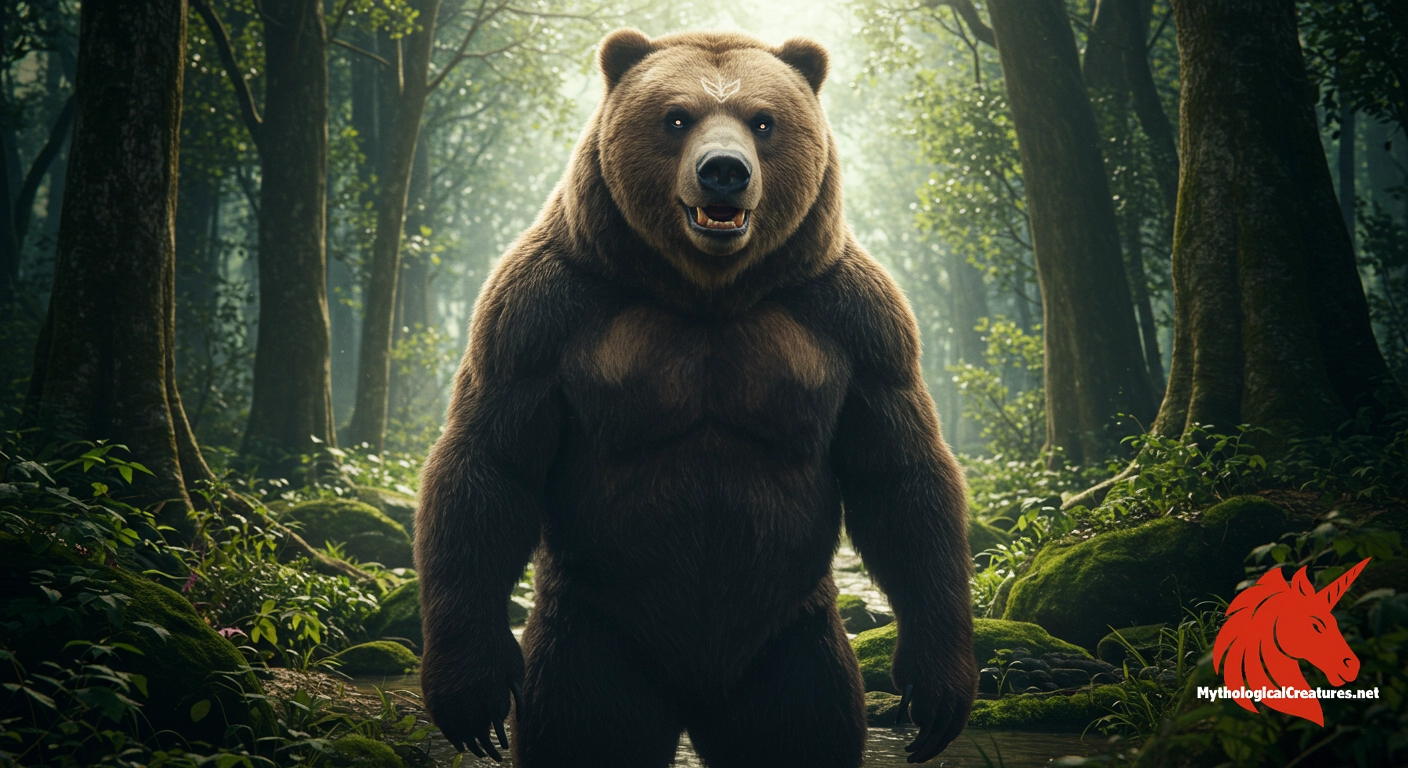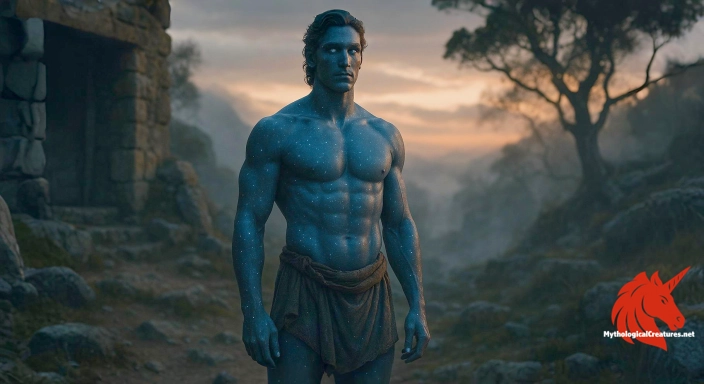Jambavan: Jambavan, also known as Jambavanta, is the divine and mighty king of bears in Hindu mythology.

Jambavan
Jambavan - Jambavan is revered as a pivotal character whose wisdom and strength aided key figures like Rama, Hanuman, and Krishna across epic narratives.
Origins & First Encounters
Jambavan, revered as the king of the bears, stands as a monumental figure whose origins are steeped in ancient cosmic tales. Born in an extraordinary manner from the yawning mouth of Brahma, he embodies a divine spontaneity that captivates the imagination. His narrative is intricately woven into the fabric of Hindu epics, most notably the Ramayana, where his intervention at crucial moments alters the course of events. His support to Rama, especially during the quest to rescue Sita, and his role in inspiring Hanuman to achieve the impossible, underline his strategic importance in these legends. Beyond his martial prowess, Jambavan is celebrated for his sagacity and his ability to bridge the human and the divine. He is depicted as a loyal guardian whose steadfastness reinforces the cosmic order. His participation in grand events like the Samudra Manthana further cements his stature as a significant mythological hero. Over centuries, his enduring legacy has come to symbolise the virtues of strength, wisdom, and unwavering duty. His story continues to inspire devotees and scholars alike, resonating with themes that are both timeless and universal.
Source Texts & Tale Variants
Ancient scriptures and epic narratives serve as the primary sources that illuminate the multifaceted character of Jambavan. The Ramayana provides one of the earliest and most detailed accounts, recounting his miraculous birth and his essential role in aiding Rama and Hanuman. Alongside this, various Puranic texts such as the Vishnu Purana and the Bhagavata Purana extend his myth by incorporating him into cosmic events like the Samudra Manthana. Early manuscripts and oral traditions further embellish his character, sometimes portraying him as a sage-like mentor endowed with profound wisdom. Different textual traditions reflect subtle variances in his portrayal, each adding layers to his heroic attributes. Folktales and regional recitations have enriched his legend, ensuring that his story adapts to the cultural milieu of successive eras. These sources collectively present Jambavan as both a fierce warrior and a compassionate guide, reflecting the duality of his nature. The diverse narrative streams highlight a dynamic character whose exploits have evolved over time, inviting continual reinterpretation. Each variant not only illustrates his bravery and strategic mind but also celebrates the mythic interplay between the divine and the earthly.
Form & Powers
The physical manifestation of Jambavan is rendered as a striking fusion of beastly might and divine dignity. His immense, powerful form is reminiscent of the raw strength of a bear, while subtle humanoid traits hint at an ancient wisdom and cultivated poise. Descriptions often portray him with a massive, sturdy frame cloaked in thick, luxuriant fur that ranges from deep chestnut to shadowy hues. His eyes, large and expressive, carry the weight of millennia, reflecting both the intensity of a warrior and the serenity of a sage. Every muscle and sinew in his body speaks of centuries of battles and the endurance of legendary exploits. Artistic renditions frequently accentuate his noble bearing with regal adornments or sacred markings, emphasising his status as a monarch among creatures. His robust claws and broad shoulders are symbolic of nature’s untamed power, yet they are balanced by a visage imbued with kind intelligence. Variations in his depictions highlight both his animalistic vigor and his refined, almost human, intellectual allure. Together, these elements construct an image that resonates with raw energy tempered by contemplative calm, rendering him both awe-inspiring and deeply respected.
Regional Faces
Across the vast cultural landscape of South Asia, regional interpretations of Jambavan reveal a spectrum of nuanced portrayals. In northern traditions, he is predominantly depicted as the formidable bear-king whose might is central to the heroic escapades found in the Ramayana. Central and western narratives often enrich his character with qualities of both a fearless warrior and a wise planner, admired for his unyielding loyalty. In southern traditions, the depictions tend to balance his fierce persona with a gentler, more endearing mentor role, influenced by local artistic sensibilities. Meanwhile, in Southeast Asian adaptations—where the Ramayana has taken on new life in works like the Thai Ramakien—Jambavan is reimagined to reflect indigenous animal symbolism and vibrant local mythologies. Temple carvings, traditional dance dramas, and regional folktales all contribute unique flavours to his legend, making him an adaptable figure in various cultural contexts. These differing regional lenses not only highlight the diversity in his narrative but also underscore a unified respect for his heroic and blessing-bestowing legacy. Such localised adaptations affirm that while the core essence of Jambavan remains unchanged, his representation is as varied as the cultures that celebrate him. Each regional variant serves as a testament to the enduring power of myth to evolve and resonate across time and place.
Cultural Parallels
Jambavan's portrayal as a mighty and wise bear-king finds intriguing parallels in mythologies across the globe. In many Celtic traditions, for instance, the bear is revered not merely for its physical strength but also for its symbolic association with healing and spiritual insight, much like Jambavan’s role as a mentor in the epic narratives. Northern European folklore similarly elevates the bear to a status of both protector and wise elder, representing a duality that mirrors Jambavan's blend of martial prowess and sagacity. Indigenous American cultures also imbue the bear with mystical qualities, considering it a guardian spirit that bridges the earthly and the supernatural realms. These international parallels highlight a universal archetype in which the bear embodies a potent fusion of raw power and enlightened wisdom. The comparative analysis underscores how different cultures utilise similar symbols to express complex concepts of leadership and cosmic balance. Jambavan, in many ways, epitomises this cross-cultural motif, serving as an exemplar of the heroic animal guide. Such comparisons not only enrich our understanding of his character but also reveal a shared human endeavour to capture the mysteries of nature through myth. Ultimately, the shared reverence for the bear across disparate cultures emphasises a profound collective connection to the natural world and its transcendental powers.
Legacy & Modern Evolution
The narrative of Jambavan has evolved remarkably over the centuries, reflecting broader shifts in culture, art, and storytelling. In early epic literature, he is portrayed as a paragon of strength and wisdom whose interventions are crucial to the cosmic order. As time progressed, his character absorbed influences from regional traditions, becoming a versatile figure celebrated in temple art, dance, and local folklore. Modern reinterpretations in television series, films, and comic books have reimagined him for contemporary audiences, blending classical elements with modern aesthetics. These adaptations often highlight his dual role as a formidable warrior and a sagacious mentor, maintaining the essence of his ancient myth while appealing to current values. In classrooms and scholarly debates alike, discussions around his symbolisms continue to underscore themes of loyalty, resilience, and spiritual guidance. His enduring presence in popular culture testifies to the timeless appeal of myth that transcends eras and societal changes. As new generations encounter his story through various mediums, Jambavan remains a potent symbol of the harmonious interplay between nature's raw power and the refined virtues of wisdom. His dynamic evolution exemplifies the transformative power of myth to adapt and inspire across time and cultural boundaries.
Interesting Fact
Jambavan is one of the few mythological figures to have witnessed and influenced the births of both Rama and Krishna, underscoring his timeless presence in Hindu lore.
Quick Creature Info
Associations:
Our Mythic Legendary Rating:

Also Sometimes Known As:
Habitat:
Supernatural Powers:
Physical Attributes:
Abilities:
Behavior:
Lore:
Related Creatures, Tales or Lore
- BBaloo (from The Jungle Book)
- UUrsa Major (mythological personification)
- BBhola (a bear-like figure in Indian folklore)
References
Discover Another Mythical Legend You May Not Have Heard Of?
Uncover the mysteries of ancient folklore and expand your knowledge of legendary beings from cultures around the world.
Dare to Meet the Astraeus....
Curated by the Mythological Creatures Team (rev. May 2025)
